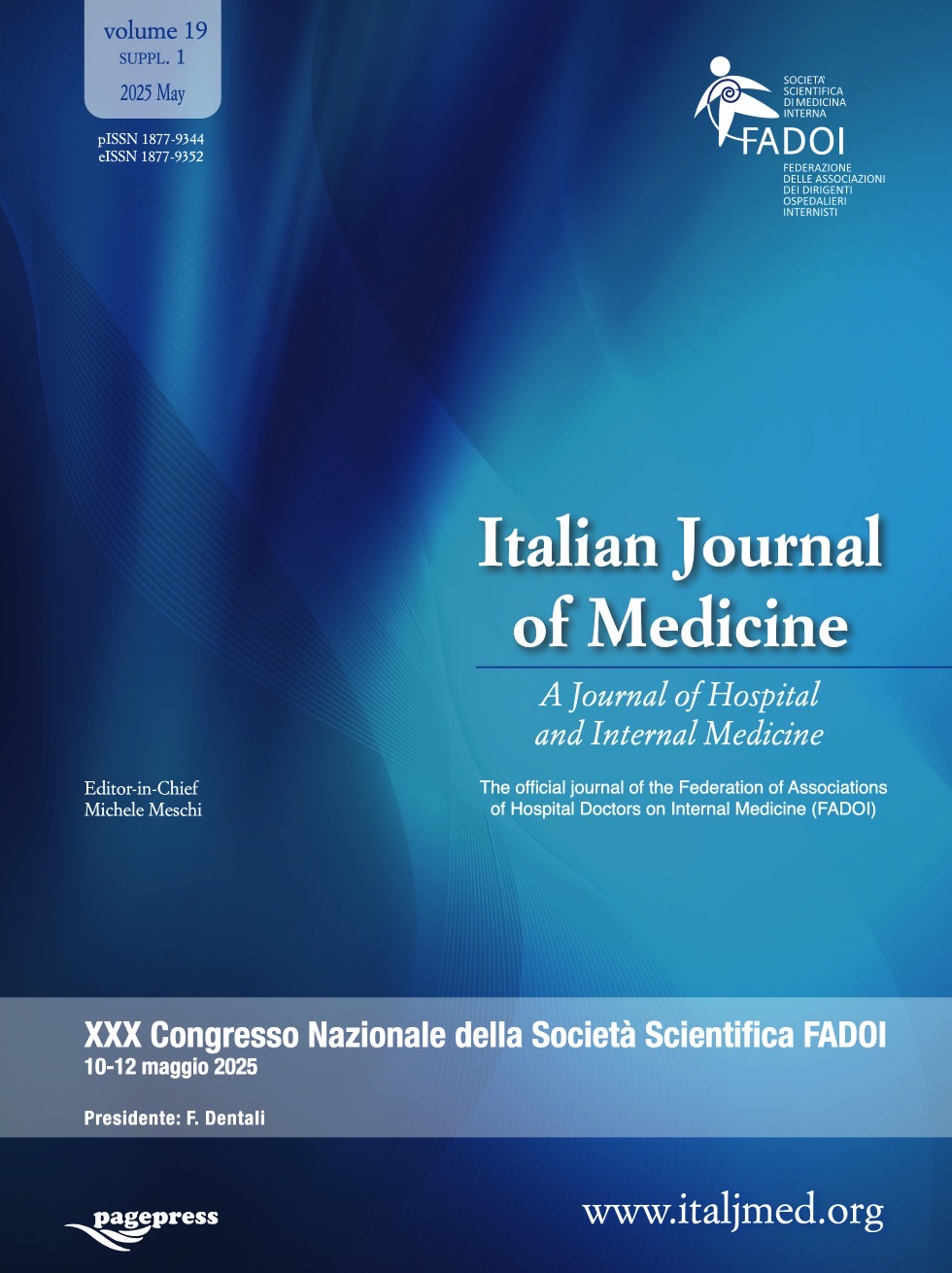XXX FADOI Italian Congress | 10-12 May 2025
27 August 2025
Vol. 19 No. 1(s1) (2025): XXX FADOI Italian Congress | 10-12 May 2025
P145 | Persistent fever of unknown origin and bilinear cytopenia of new onset in healthy woman
P. Troia1, M.G. Loffredo1, F. Racca1, R. Remollino1, N. De Biase1, G. Tancredi2, G. Bini3, S. Mechelli3, C. Sonato3, M.G. Paladini3 | 1Department of Clinical and Experimental Medicine, Internal Medicine Unit, University of Pisa, 2Department of Clinical and Experimental Medicine, Hematology Unit, University of Pisa, 3Department of Emergency and Urgent Care, Internal Medicine Unit, AOUP, Pisa, Italy
Publisher's note
All claims expressed in this article are solely those of the authors and do not necessarily represent those of their affiliated organizations, or those of the publisher, the editors and the reviewers. Any product that may be evaluated in this article or claim that may be made by its manufacturer is not guaranteed or endorsed by the publisher.
All claims expressed in this article are solely those of the authors and do not necessarily represent those of their affiliated organizations, or those of the publisher, the editors and the reviewers. Any product that may be evaluated in this article or claim that may be made by its manufacturer is not guaranteed or endorsed by the publisher.
45
Views
0
Downloads







